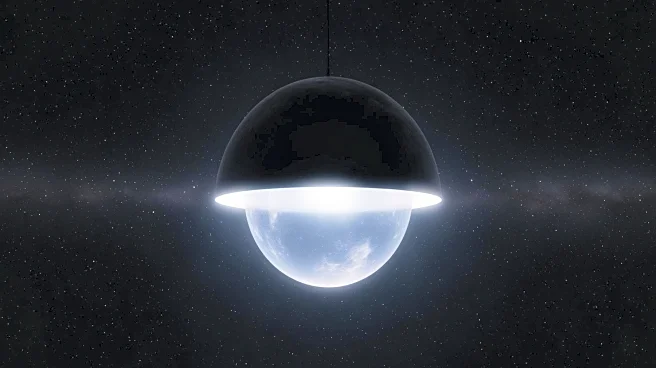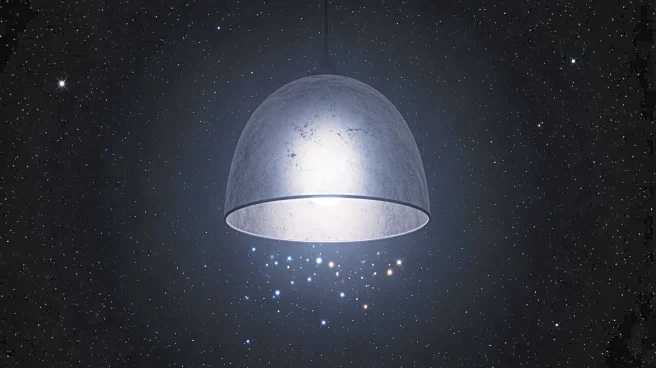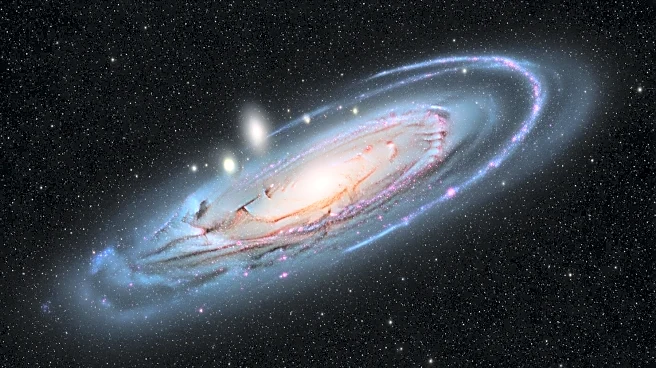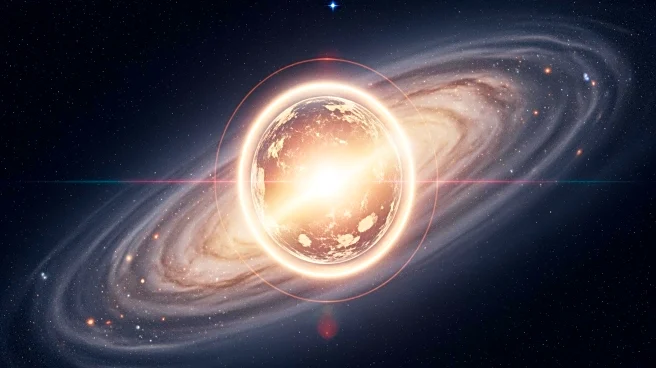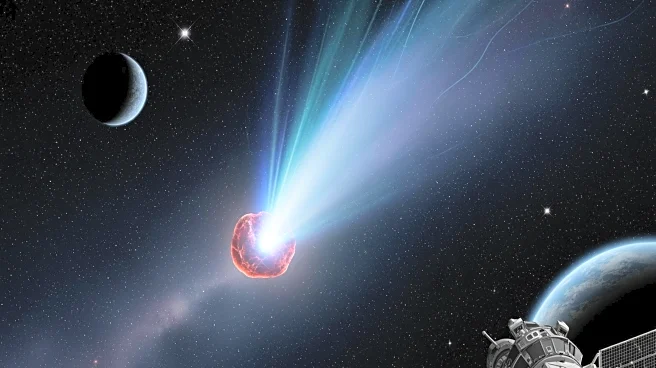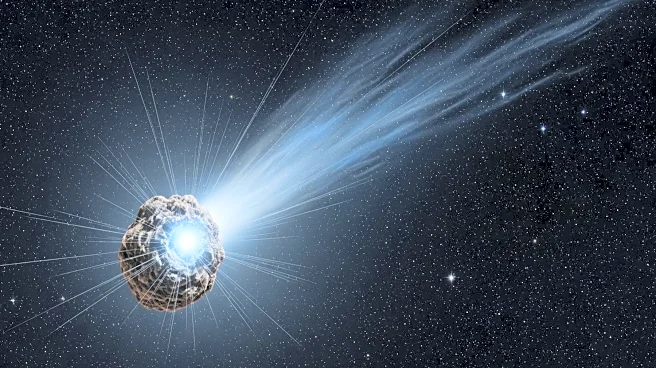What's Happening?
A recent study published in Physical Review Letters proposes that dark matter, which constitutes approximately 85% of the universe's mass, might not be entirely invisible. The study suggests that clumps
of dark matter could act like 'lampshades,' dimming the light from stars enough for current telescopes to detect. This challenges the prevailing theory that dark matter is composed of WIMPs (Weakly Interacting Massive Particles), which do not interact with light. Instead, the study highlights MACHOs (Massive Astrophysical Compact Halo Objects) as potential dark matter candidates. These objects, such as neutron stars or black holes, might emit little or no light, making them difficult to detect unless they dim starlight.
Why It's Important?
The study's findings could significantly impact our understanding of dark matter, a fundamental component of the universe. If MACHOs are confirmed as dark matter, it would shift the focus from WIMPs, which have eluded detection despite extensive research. This could lead to new methods of studying cosmic structures and the universe's formation. The ability to detect dark matter through its interaction with light, even minimally, could open new avenues for astronomical research and potentially redefine existing theories about the universe's composition.
What's Next?
Astronomers may utilize existing data sets, such as those from the Optical Gravitational Lensing Experiment (OGLE), to search for these dimming events. This approach could provide new insights without the need for advanced telescope technology. If successful, it could validate the 'lampshade effect' and further our understanding of dark matter. Even if results are inconclusive, the research will help refine current models and narrow down the possibilities of what dark matter could be.
